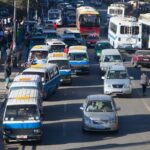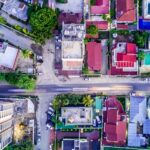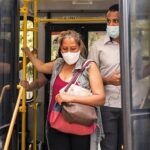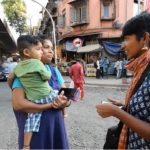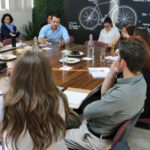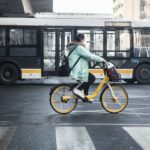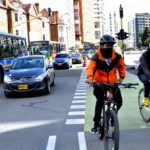Search Results for 'feed'
The Digital Transport for Africa (DT4A) initiative, led by WRI and partners and funded by the French Development Agency (AFD), has selected four winners of the first-ever DT4A Innovation Challenge. From private companies to universities and NGOs, these initiatives are helping to shift ...

In August 2021, the Biden Administration and American automakers set a goal for electric vehicles (EVs) to make up 50% of new vehicle sales by 2030. In support of this goal, the recently enacted federal Infrastructure Investment Act allocates $7.5 ...

Infectious disease outbreaks can have enduring influence on urban design and several have irrevocably shaped how modern cities feel and function. For example, parks, wide street design and even the home bathroom are all important legacies of cholera outbreaks; today, ...

World leaders are gathering in New York this week and next for the UN General Assembly meeting (UNGA76) and Climate Week. The two major events come at a critical moment for climate action. The world is facing an emergency. Nearly ...

The COVID-19 pandemic has made existing knowledge about how, why and where people travel largely obsolete. Even as some cities recover, travel patterns have changed. One thing is clear: around the world, public transport ridership declined precipitously and has not ...

Intersections are among the most high-risk locations along any urban road, where multiple transport modes and commuters collide. In Mumbai, intersections cover only a fraction of the 2,000-kilometer road network but account for nearly 40% of all high-risk zones. Mumbai’s crash ...

Crisis often sparks changes to the ways we move. Post-war prosperity made the automobile a household item, and lifestyle. The 1970s global oil and fiscal crisis brought a short-lived bike boom and a retreat of city dollars for public transit. ...

Cycling, a sustainable, healthy and low-cost mode of travel, has seen a resurgence in popularity during the pandemic as cars and buses stayed off the roads. During the lockdown in the UK, cycle-to-work schemes saw a 200% rise in bicycle orders from ...

This is part two in a series on capacity development for city leaders. As the global urban population continues to grow rapidly, cities are being tasked with addressing a variety of needs – economic, social, political, environmental – with very ...

2020 brought tremendous disruption to the global transportation sector. As the world coped with a pandemic, millions began working from home and millions more lost their jobs. Logistics networks were broken and then reshaped. All while the planet experienced the ...

2020 upended life as we know it. The coronavirus killed almost 2 million people and counting, while roughly 100 million people fell into extreme poverty. The world entered its worst recession since the second world war. Deep-rooted racial and economic injustices were ...

Just before she took office in January 2020, Mayor Claudia López committed to redesigning a major artery of Bogotá into a “green corridor” for sustainable, active mobility. She also committed to a comprehensive participatory planning process – a potentially daunting ...

Countries agreed to limit global warming to well below 2 degrees C (3.6 degrees F) and ideally 1.5 degrees C (2.7 degrees F) as part of the 2015 Paris Agreement. The latest science shows that emissions will need to drop ...

Cities are redefining their relationship with transport and it’s some of the smallest vehicles that are leading the way. Shared bike services, e-bikes, scooters and mopeds, together known as micromobility, are proliferating in the urban landscape. Recent changes in mobility ...

As coronavirus restrictions ease around the world, many consider a walk around their neighborhood for some fresh air to be a welcome break from confinement. However, socioeconomic status could greatly affect the landscapes people find on these strolls, particularly in how much ...

Page 3 of 25« First...234...1020...Last »
 Phil
Great article! A lot of what I have read here, has already been implemented in cities in the Netherlands, with Denmark the two bicycle countries par...
Phil
Great article! A lot of what I have read here, has already been implemented in cities in the Netherlands, with Denmark the two bicycle countries par...
 Bobby Salvin
I understand why some people wish mobility and GDP weren't connected, but it's wishful thinking. During the pandemic, for instance, when the economy...
Bobby Salvin
I understand why some people wish mobility and GDP weren't connected, but it's wishful thinking. During the pandemic, for instance, when the economy...
 Peace
Let me understand your Position -
We need to make our streets and public spaces dangerous and inhospitable so the disabled and infirm are forced to...
Peace
Let me understand your Position -
We need to make our streets and public spaces dangerous and inhospitable so the disabled and infirm are forced to...





